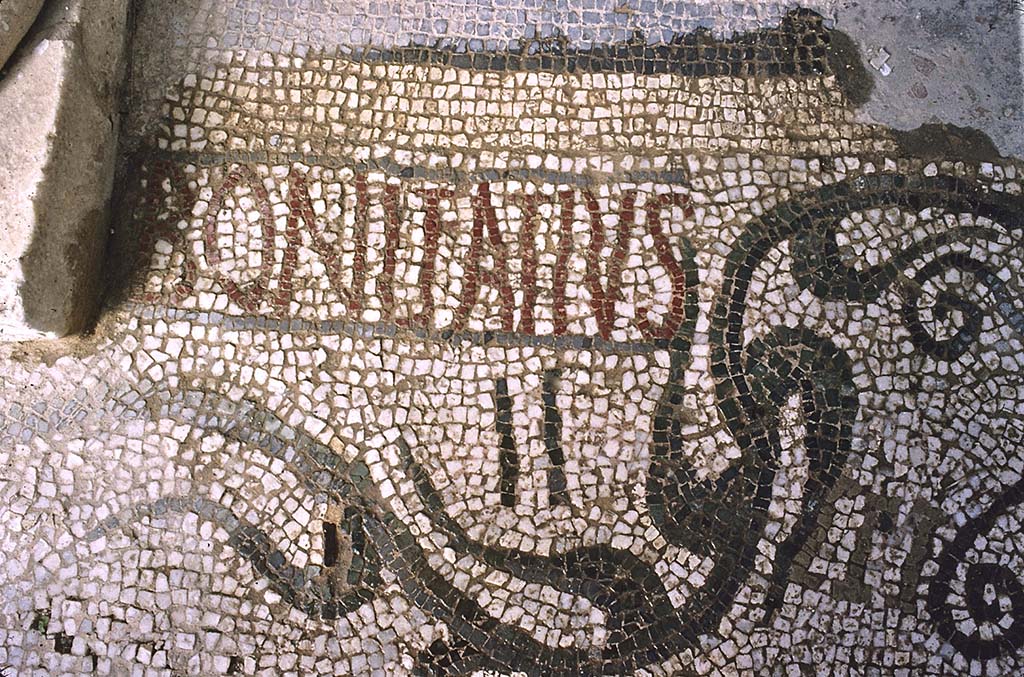The mosaic inscription is inserted in a panel placed along the ambulacrum surrounding the peristyle, near the central part of the eastern side, in an area close to the steps leading to the upper level of the corridor of the great hunt. According to studies, the panel was inserted after the general composition of the figurative device that characterises the portico.
The strip is decorated in mosaic with a kantharos, from which plant elements and millet branches pour out, and bears the name Bonifatius alongside the design of some bars, identifiable as the Roman numerals: II, III and IIII.
The name Bonifatius had already been found in African mosaics from the 3rd and 4th century; as was the case of a mosaic from Tunisia where the name Bonifa[tius] is linked to the figure of a venator, “hunter”, within a wider composition with protagonists of the games in the amphitheatre.
The name has an auspicious meaning and some fighters or charioteers of the circus even had a “battle name” with an eloquent meaning, often referring to their skills.
The marks II, III and IIII, according to a recent interpretation, have been identified as numerals, each corresponding to a different sodalitas, like a present-day corporation. The African sodalitates of venatores organised all aspects of venationes, from finding the beasts to fighting against them in the amphitheatre, but also exhibiting particular animals.
In the Bonifatius mosaic you can find millet branches, figures, and in the border of the opposite side, ivy leaves.
The position of the panel, in front of the stairs leading to the ambulacrum of the Great Hunt, where the capture of the animals to be used for venationes is represented, places the elements analysed above in close correlation, even if, as current studies stand, there is no one shared interpretation.